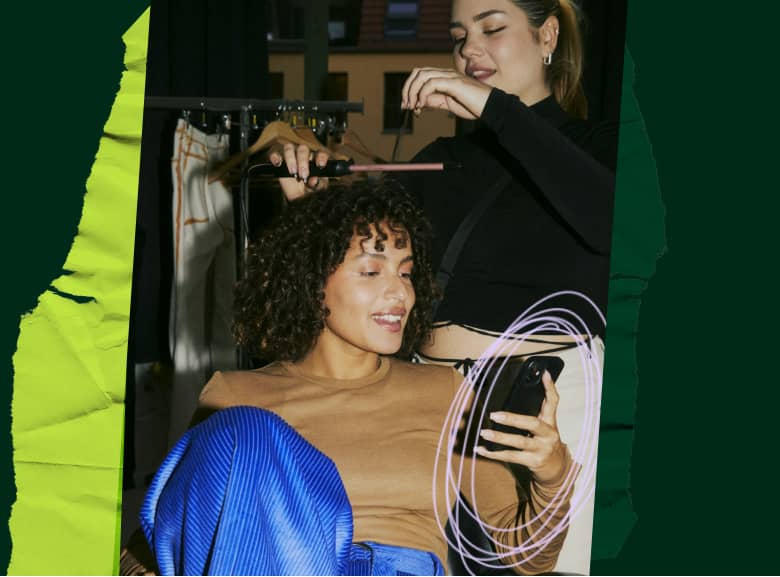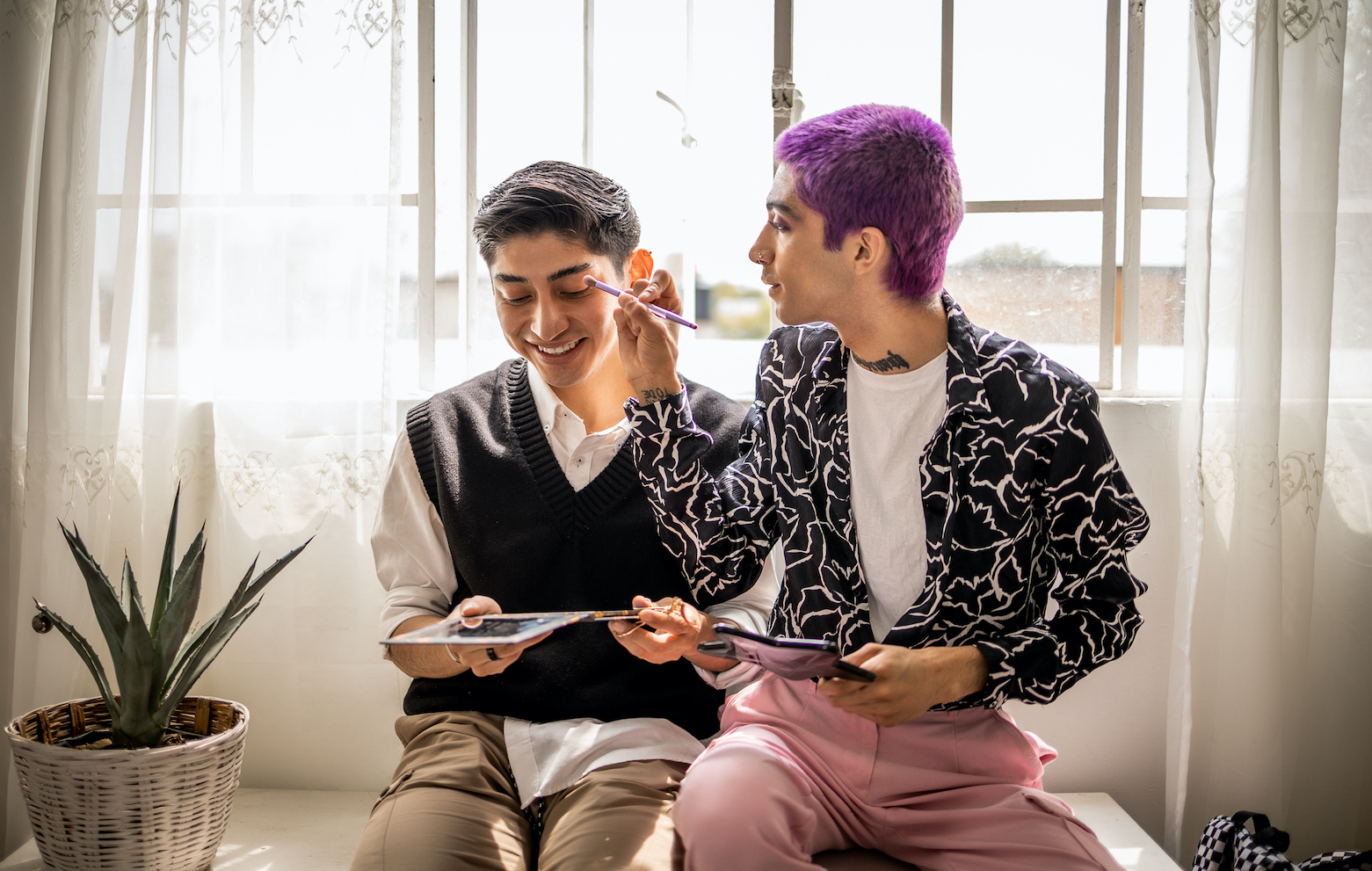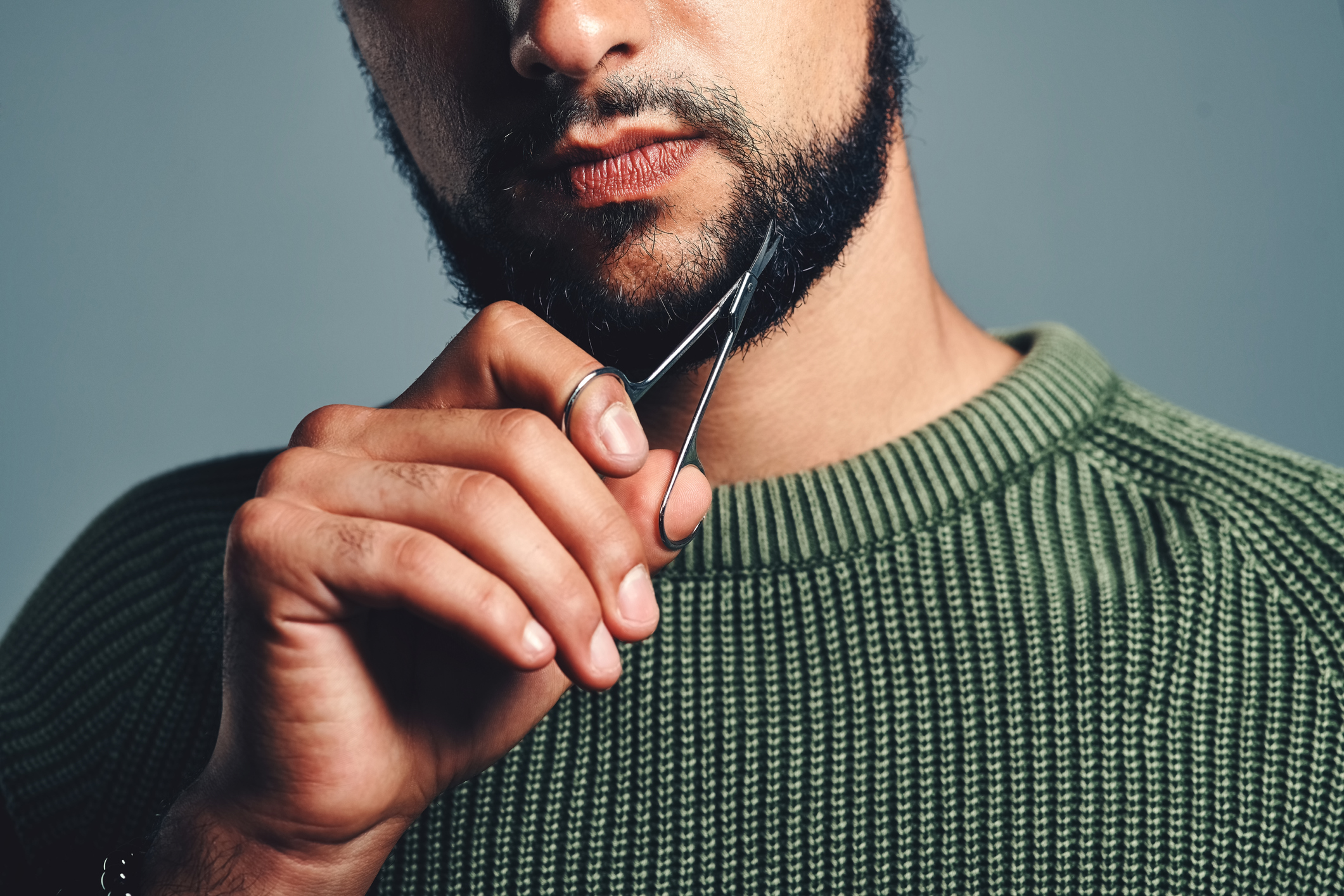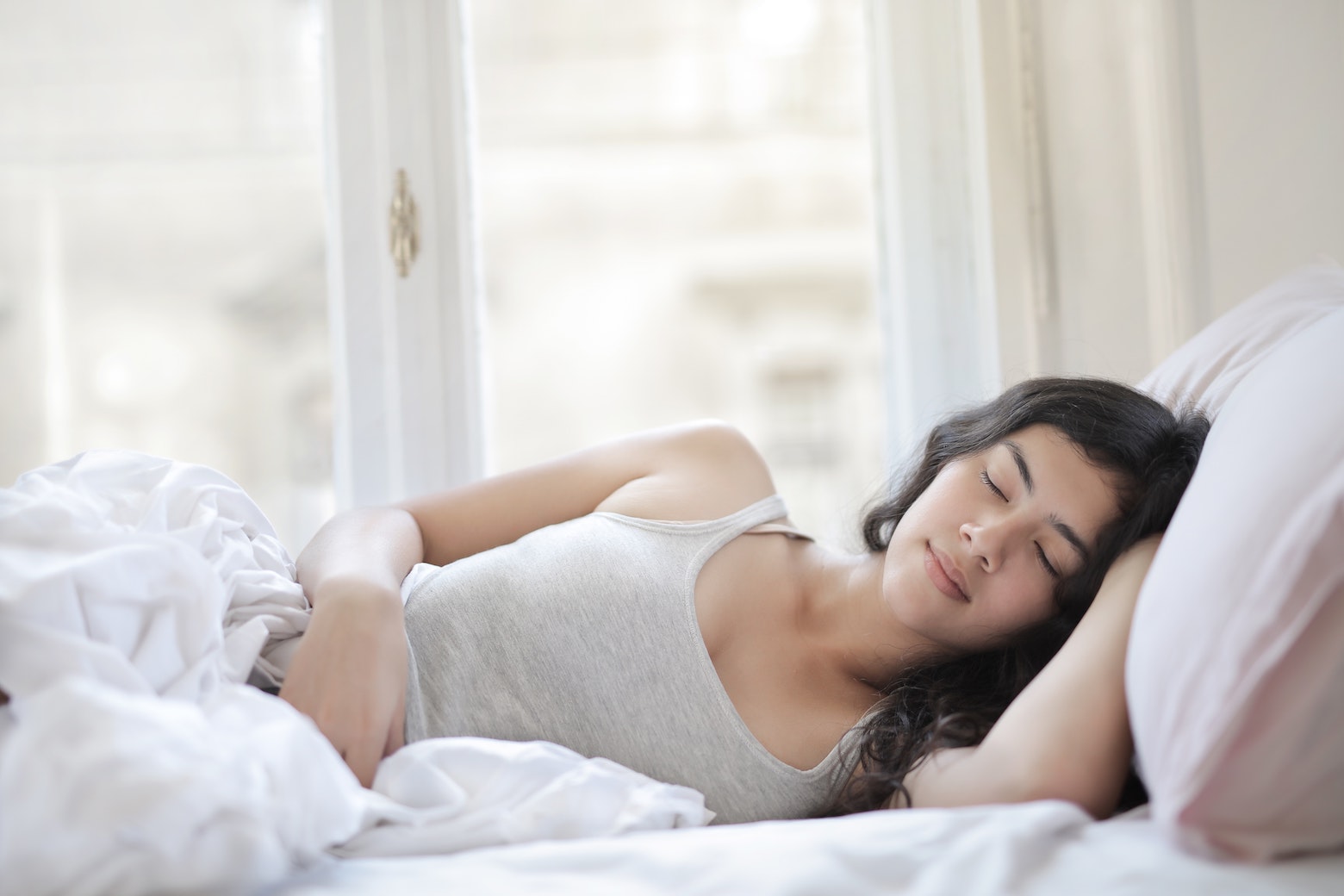Survey Confirms Most Social Media Users Are Under the Influence
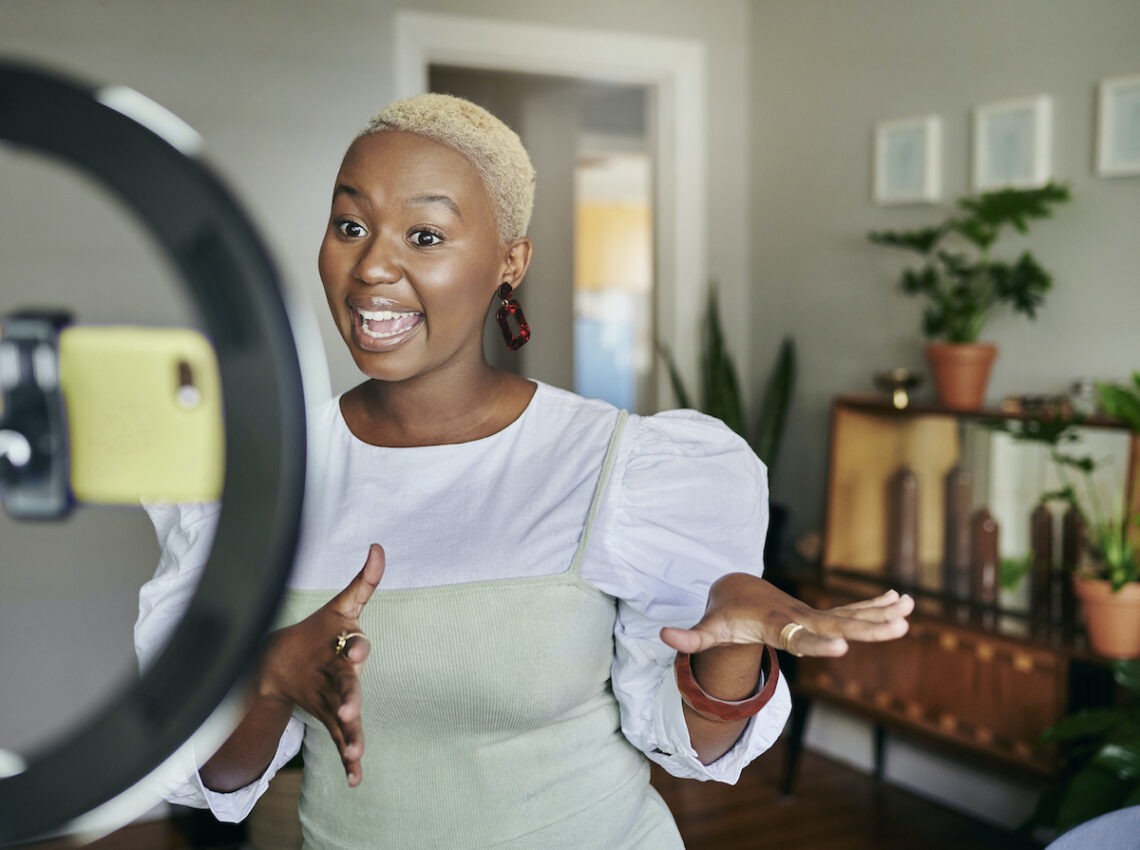
We always have new (or revived) beauty trends to keep up with, but how do we discover them in the first place?
The internet has been a go-to destination since the early aughts. Beauty influencers have been dominating YouTube and other platforms since the early 2010s, and now, TikTok videos can turn anything from drugstore mascara to celebrity skincare into a viral phenomenon. #TikTokMadeMeBuyIt has more than 12 billion views.
In a social media landscape dominated by influencers, we’re constantly seeing advertisements, whether we know it or not. We surveyed just over 1,000 Americans to find out how influencers and their recommendations determine the products people purchase.
Key findings
- Of social media users surveyed, 76% think influencers’ recommendations are fake. Yet, influencers still drive purchases.
- After seeing beauty products on the app, 89% of TikTok-ers have purchased them.
- Instagram ads encourage the most impulse buys.
- Social media users are most tired of ads from Nike, Amazon, and SHEIN.
On social media apps, 79% of users encounter influencers
If you’ve opened up Instagram or TikTok lately, you know influencers are everywhere. Most social media users (79 percent) encounter influencers when they’re on social apps these days, and TikTok and Instagram are especially saturated. Nearly all TikTok users (94 percent) report seeing influencers, as do 88 percent of Instagram users.
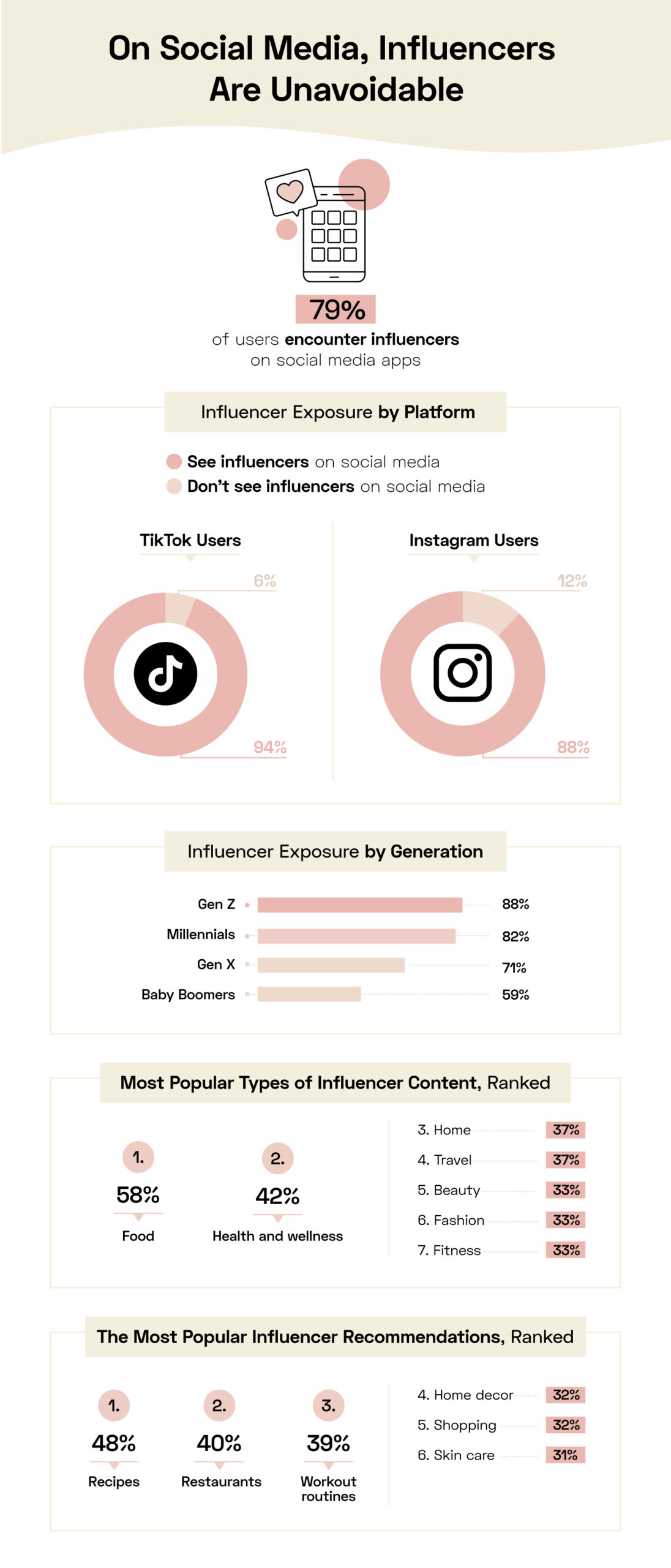
Younger social media users are especially inundated with social media influencers. We found 88 percent of Gen Z users see influencers online, compared to 59 percent of Baby Boomers.
In general, the most popular types of content among social media users focus on food, health and wellness, and travel — and they tend to look for inspiration in these areas, too. Social media users’ three favorite influencer recommendations are recipes (48 percent), restaurants (40 percent), and workout routines (39 percent).
Users pay attention to influencer recommendations, even if they’re fake
Just because social media users see a lot of influencer recommendations doesn’t mean they think they’re all genuine. In fact, 76 percent of users think the recommendations influencers share on social media are fake — but that doesn’t stop them from making purchases.
Of those we surveyed, 58 percent would purchase a product based on an influencer’s recommendation because they can see it in action and tell how well it works. Another 45 percent would purchase a product, like an item of clothing or new kitchenware, based on a recommendation because they can see how good it looks.
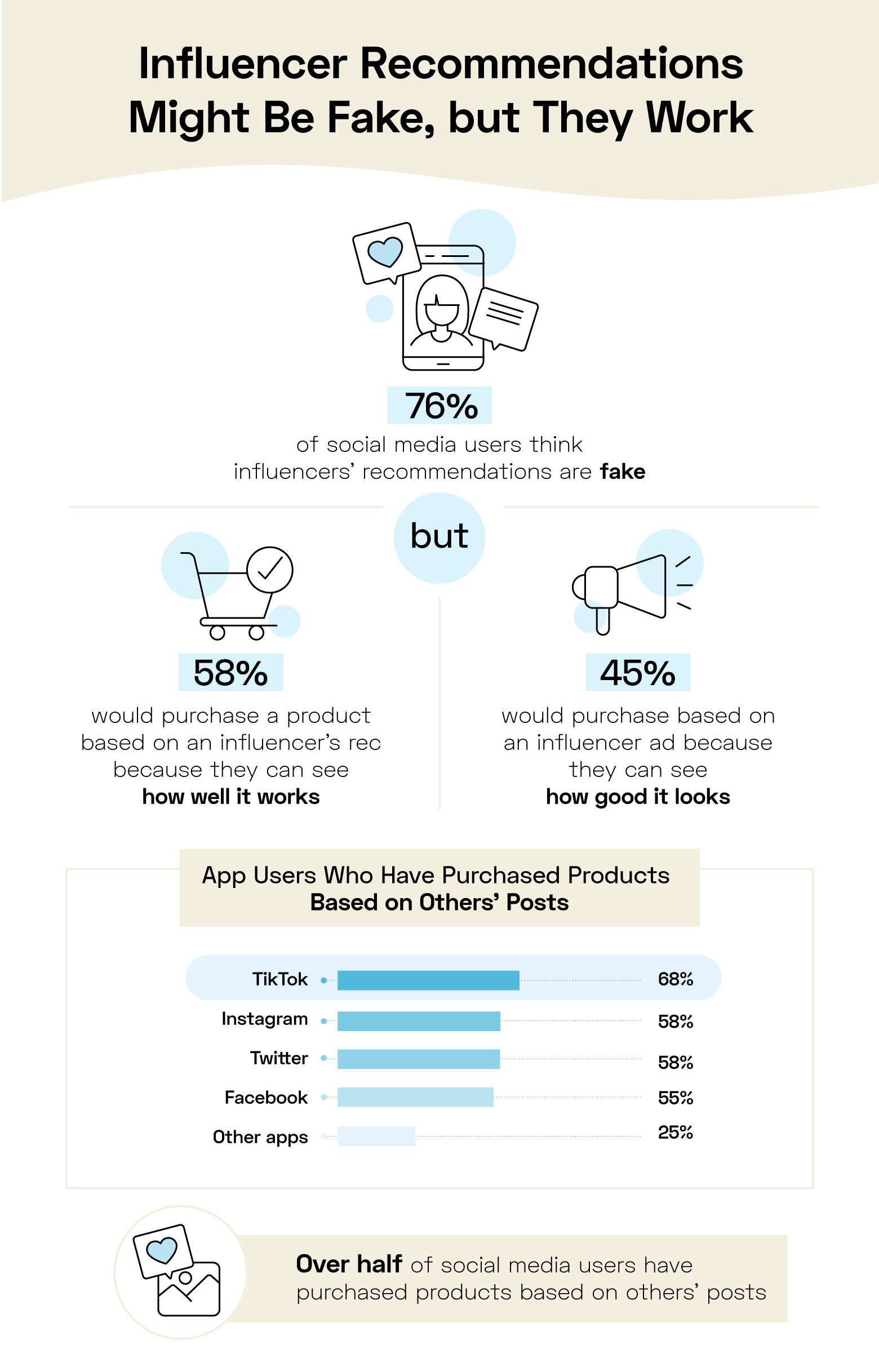
Buzz on social media encourages users to make purchases. Just over half (52 percent) of social media users say they’ve purchased a product because they saw someone post about it on an app. TikTok users are most likely to purchase products because someone else posted about them — 68 percent say they’ve bought something because someone else posted about it first.
Users think Instagram has the best ads
Even though influencer marketing has a lot of hype, other social ads work too. Nearly half of social media users (49 percent) have purchased a product because they saw an ad for it on social. Again, we found TikTokers are especially susceptible to marketing: 58 percent of TikTok users have purchased products thanks to ads.
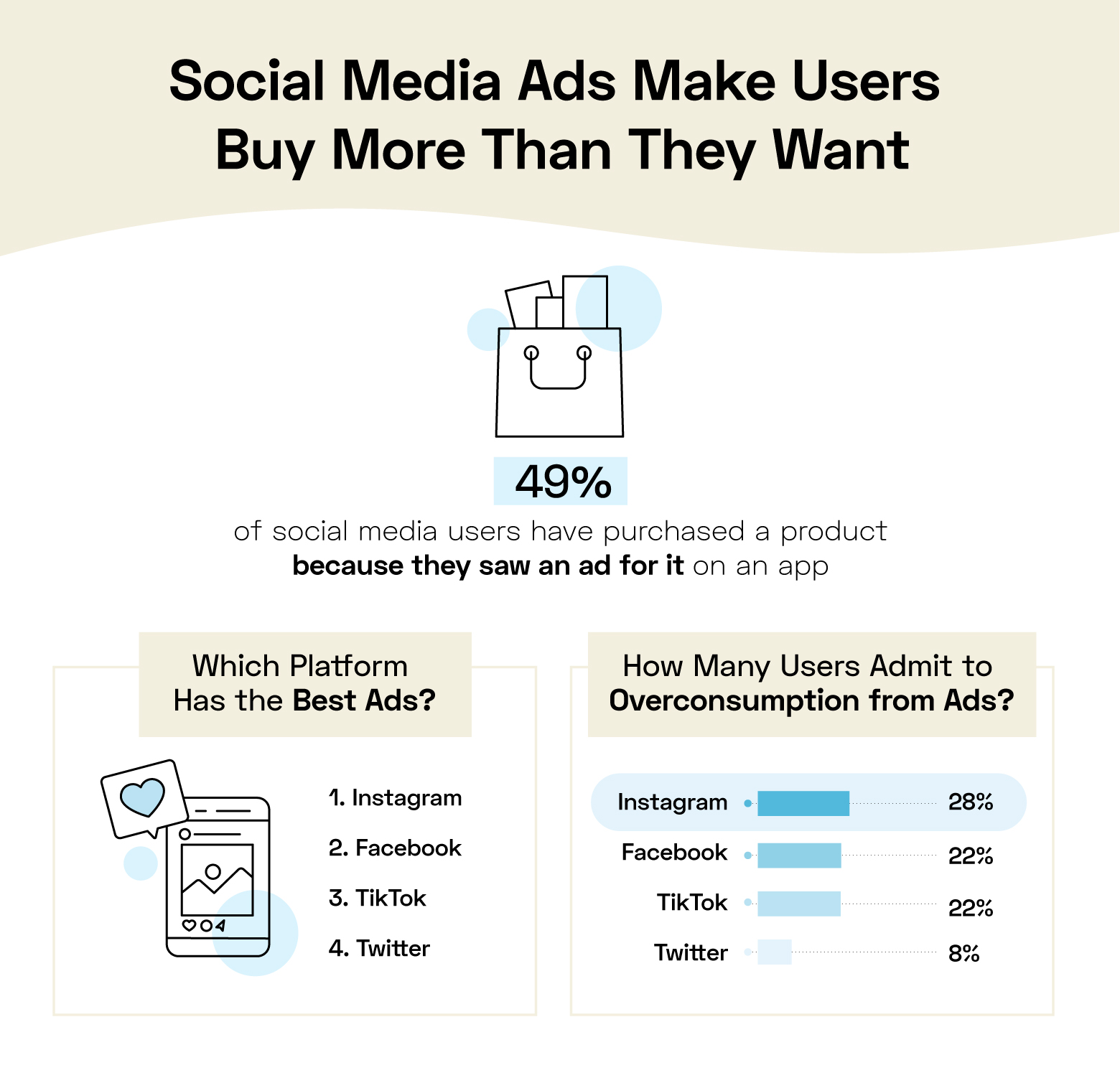
Of course, not all ads are created equal. Social media say Instagram ads are the best, followed by those on Facebook. They rank TikTok and Twitter’s ads third and fourth, respectively.
Given their highly-rated ads, it’s no surprise, then, that Instagram causes overconsumption among its users. Nearly a third of Instagram users (28 percent) say the app makes them want to buy more products than they want. By comparison, 22 percent of Facebook users say the app makes them buy too much stuff, as do 22 percent of TikTok users and 8 percent of Twitter users.
At a certain point, social media ads become too much. Social users told us they’re especially tired of seeing so many ads from major corporations like Nike, Amazon, and SHEIN.
Social media encourages impulsive purchases
About 2 in 3 social media users purchase products on social media at least a few times per year, but shopping via social media isn’t always smart. As it turns out, 42 percent of social media users have made impulse buys while shopping on social media.
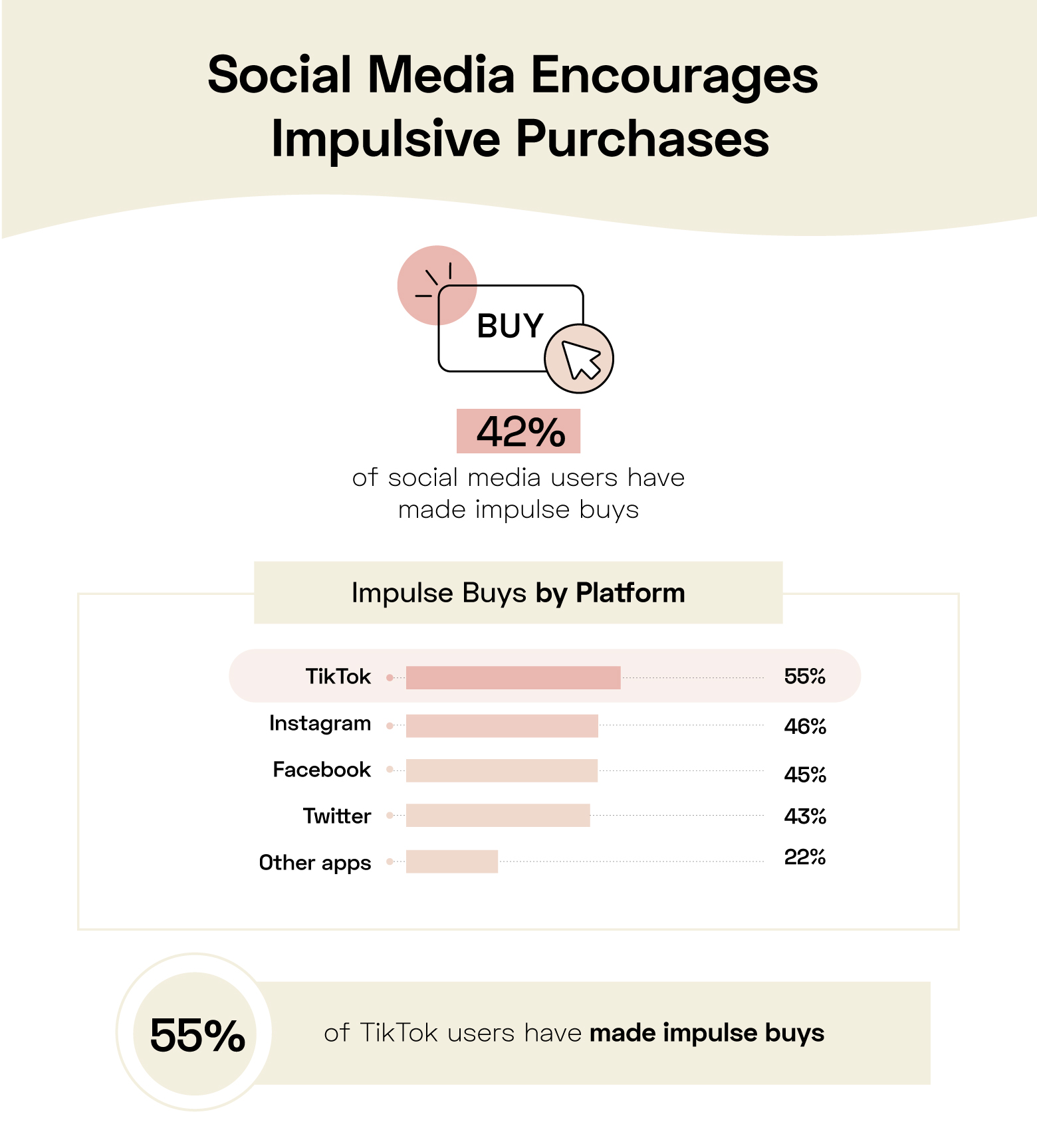
TikTok users are the most susceptible to snap decision-making. Over half (55 percent) have made impulse purchases thanks to social media. Compared to other app users, TikTokers also make the most purchases on social media: 9 percent buy something new at least every month.
Beauty influencers have the most sway, especially over TikTok-ers
Given how many social media users are under the influence, we wanted to find out which types of influencers have the biggest effect on their decisions to buy a new product. Social media users say beauty influencers have the most sway over their decisions. Health and wellness and fitness influencers are next in line, followed by food and fashion. Travel and home design influencers have the least influence, by comparison.
Beauty influencers’ impact is evident in social media users’ purchase habits. Over half (57 percent) of all users have purchased a beauty product after seeing it on a social media app, and a striking 89 percent of TikTok users have purchased beauty products thanks to social media.
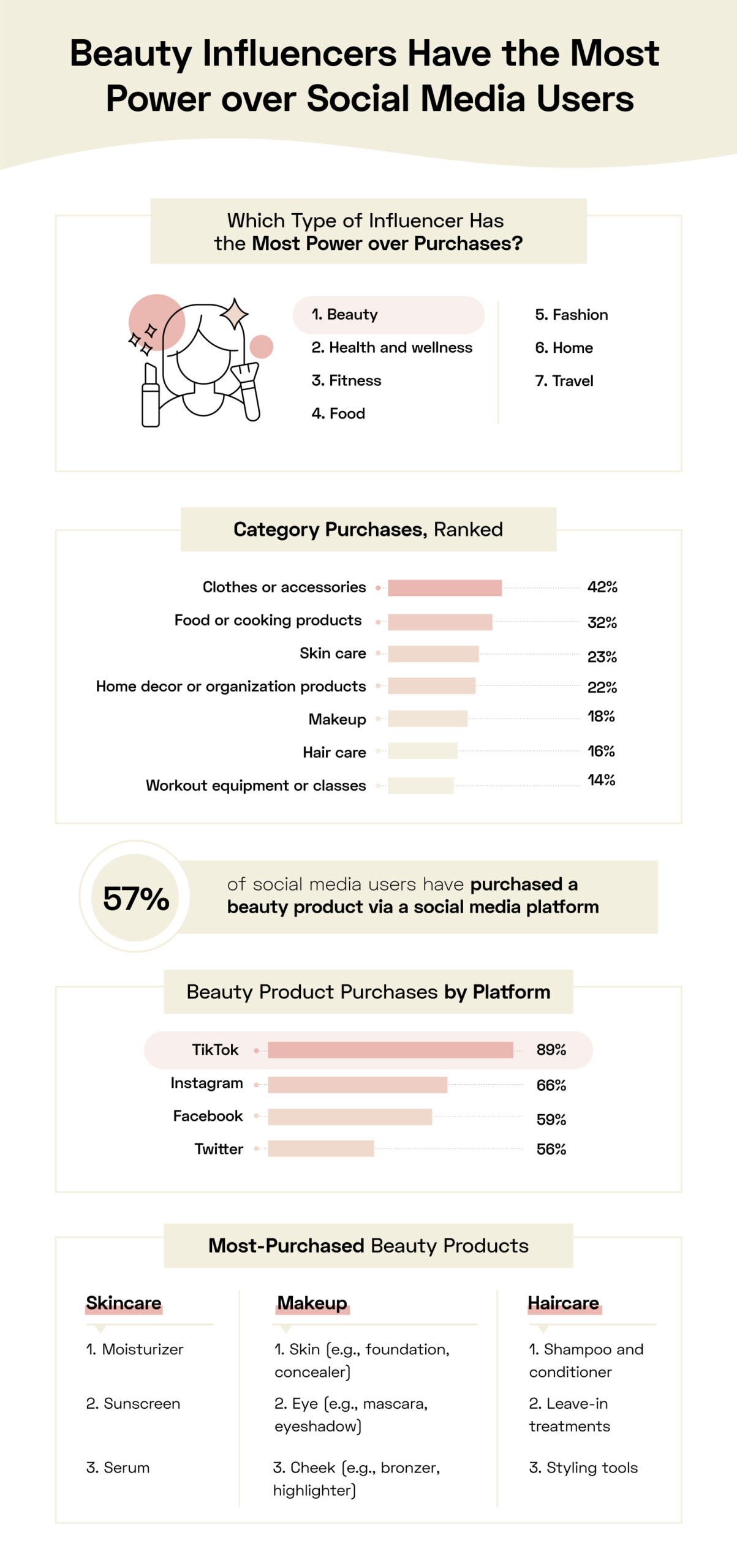
The top three skincare products social media users buy are routine staples: moisturizers, daily SPF, and serums. The top three makeup purchases are skin products (like foundation and concealer), eye glam (mascara, liner, and shadow), and cheek products (like bronzer and highlighter).
Social media users are snapping up hair products, too. Shampoo and conditioner combos, leave-in hair treatments, and styling tools, like the Beachwaver and one-step hairstylers, are the most popular choices.
Of course, social media users aren’t only interested in beauty products when they’re shopping on apps. Other top categories include:
- Clothes or accessories: 42 percent
- Food or cooking products: 32 percent
- Home decor or organization products: 22 percent
- Workout equipment or classes: 14 percent
Whether or not you want to find out what influencers have to say, there’s no denying that social media is a treasure trove of beauty inspiration. Apps like Instagram and TikTok can inspire our creativity, connect us with people who have the same passions, and even put the next great product in our hands. If you’re looking for a new stylist, checking out their social profiles is a great way to see if your aesthetics are a good match.
Methodology: We conducted a survey of 1,020 active social media users in the U.S. on August 19, 2022. Of those surveyed, 49 percent identify as men, 48 percent as women, and 2 percent as nonbinary.
